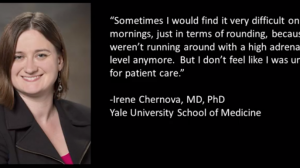NEW YORK (Reuters Health) – Transvaginal laparoscopic ovarian drilling is effective in enhancing pregnancy rates in women with polycystic ovary syndrome (PCOS), according to a report in the June issue of Fertility and Sterility.
As an alternative to standard laparoscopic procedures, transvaginal ovarian capsule drilling has been shown to be successful in several pilot studies, the authors explain. The transvaginal approach has the advantage of being incision free as it uses a needle-puncture technique, and it “offers a direct access to the tubes, ovaries and fossa ovarica.”
Dr. Stephan Gordts and colleagues from the Leuven Institute for Fertility and Embryology, Belgium evaluated the efficacy of transvaginal endoscopic ovarian capsule drilling in 39 PCOS patients who previously failed ovulation induction.
The mean duration of infertility in these patients was 26.5 months, and their mean age was 30.4 years.
Five of the patients were lost to follow-up. After transvaginal ovarian drilling, 28 of the remaining 34 women became pregnant: 7 women became pregnant spontaneously without any additional treatment, 9 became pregnant after ovulation induction, and 12 became pregnant after in vitro fertilization, the authors report.
There were no multiple pregnancies or spontaneous abortions.
Ovulatory menstrual cycles resumed between 6 and 8 weeks after the ovarian drilling, the researchers note. “The mechanisms of ovarian drilling are generally unknown,” the investigators write. “It is believed that trauma to the ovary impairs the local production of androgens.”
Dr. Gordts and colleagues conclude, “The transvaginal approach for ovarian capsule drilling offers a valuable, efficacious, and less invasive alternative to the standard laparoscopic procedure in patients with clomiphene-resistant PCOS.”
They add, “With a very low morbidity and a high patient compliance it is in our experience the treatment of choice compared with a time-consuming and sometimes difficult ovulation induction with gonadotropins involving risks of hyperstimulation with multiple pregnancies.”
Reference:
Fertil Steril 2009;91:2520-2526.




